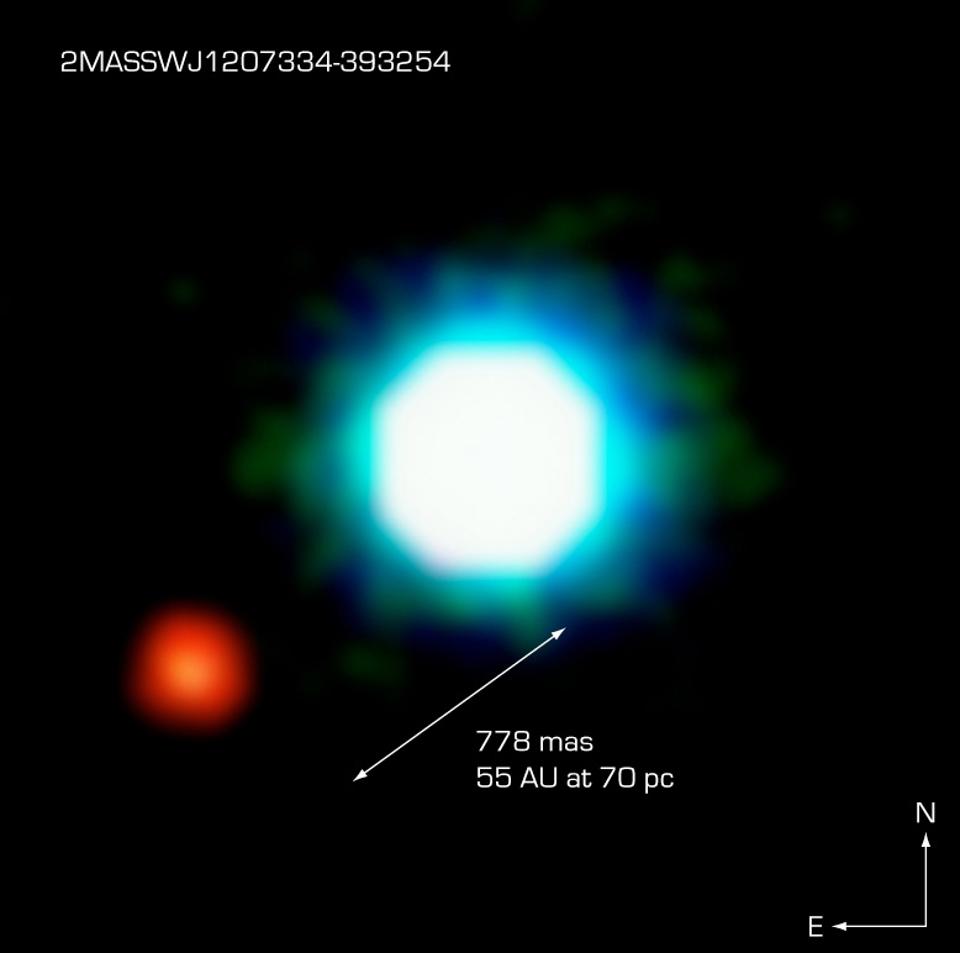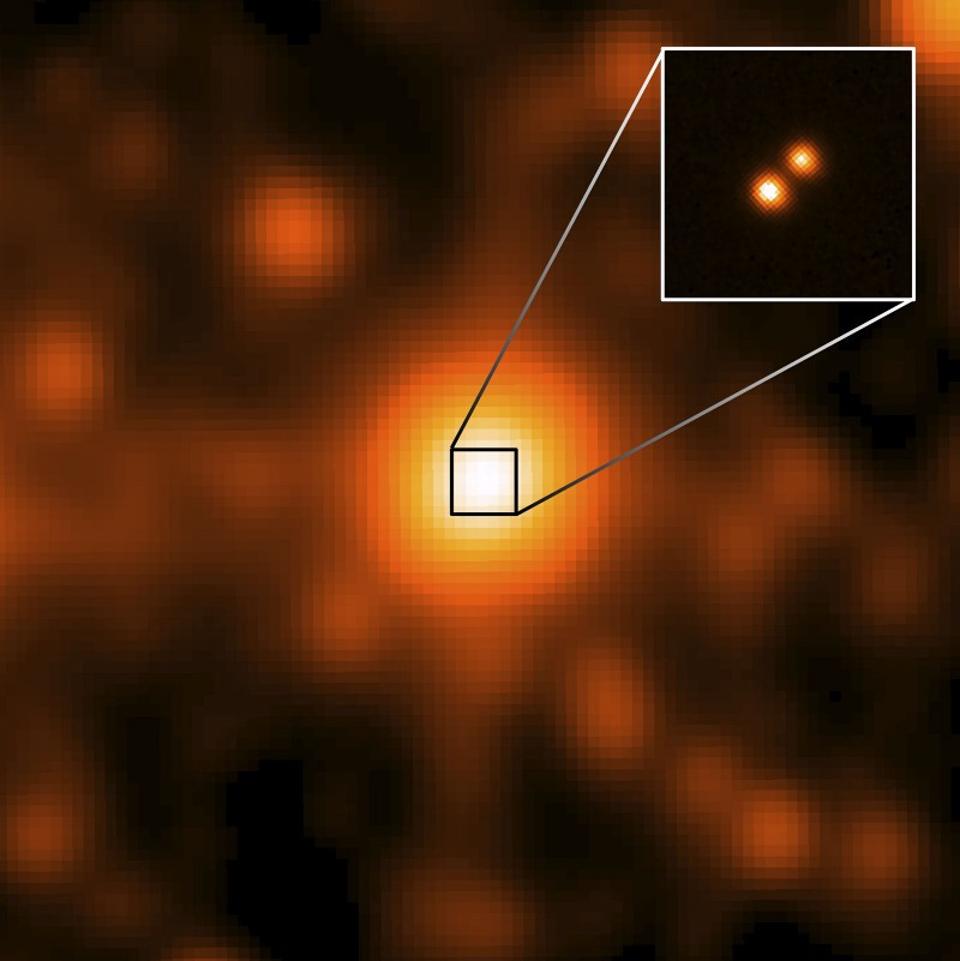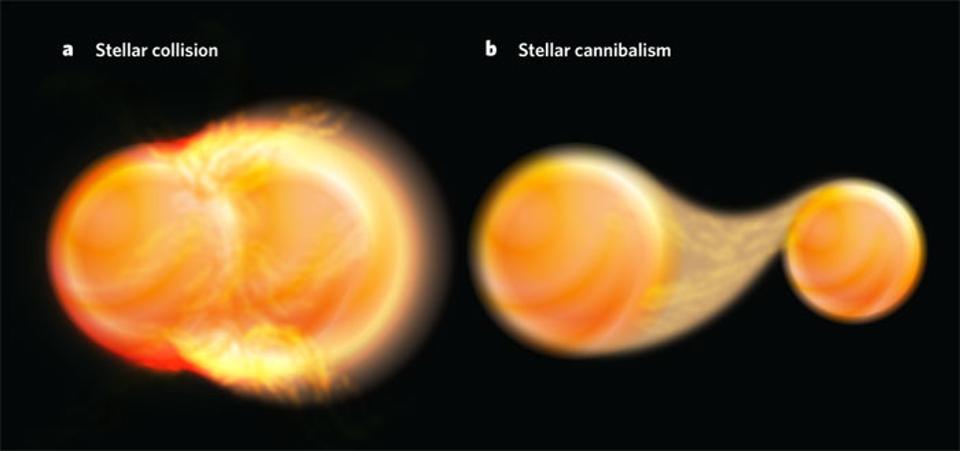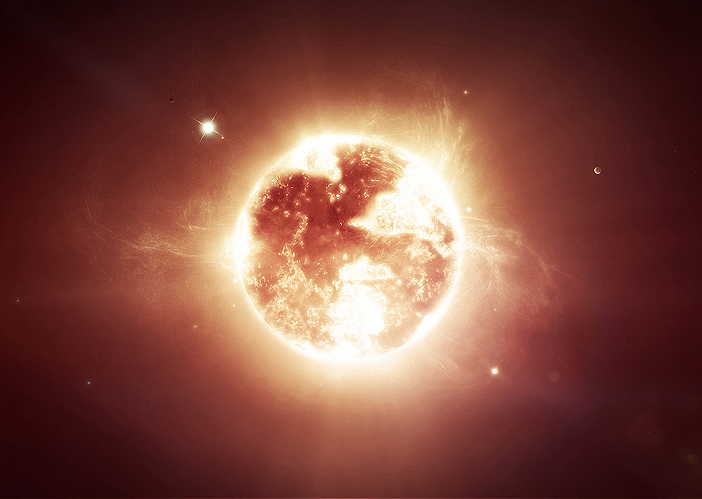The nearest brown dwarf to Earth is Luhman 16. If every bit of matter in it were combined it would have enough mass to graduate from a pair of brown dwarfs, a type of star that failed to fully form, to a red dwarf star, the next star class up. However, whether this can or cannot actually happen is an intriguing question that has yet to be answered.

At night, the sky is full of stars as far as they eye can see but it is also full of even more objects, not visible to the naked eye, that never acquired enough mass for nuclear fusion or burned hydrogen into helium or converted matter into energy. Not all of them are brown dwarfs, many become asteroids, gas giants, fragmented gas clouds, and rocky worlds. These collections of cosmic objects account for a significant amount of mass in the universe. Brown dwarfs get a little further than many of these objects, with enough mass to ignite some fusion reaction but not enough to be considered successful stars. It is common to find brown dwarfs in binary pairs leading some to wonder if they might merge one day.
Let’s begin by examining what exactly it requires to become a true star in the first place.
A key component of stardom is the hydrogen fusion of a star’s core, which occurs in temperatures of about 4,000,000 K (that’s a balmy 7,199,540 F). However, the temperature of gases in space is distinctly cold, only a bit above absolute zero or 0 K (a solid —459 F). This all changes once gravity comes into play. Natural occurring gravity, which happens when any amount of mass is close enough together, leads to the collapse of the gas cloud aiming to be a star. As it collapses, atoms pick up speed, start to collide, and eventually heat up. When there aren’t enough atoms, that heat is lost to space in the form of light traveling across the galaxy. But if there is a sufficient amount of atoms clumped together, the heat generated by their speed becomes trapped, increasing the heat of the core of the gas cloud.
Next is the crucial accrual of mass because the more mass acquired the closer the core temperature comes to the 4,000,000 K required for fusion. With smaller amounts of mass, like what it takes to form an asteroid, an Earth-like planet, or even a planet as large as Jupiter, the core temperature will continue to increase into the thousands or tens of thousands of degrees but simply not enough to become a star. Reaching a critical mass of 13 times the size of Jupiter will raise the core temperature to 1,000,000K, not enough for hydrogen fusion yet but enough to reach another important milestone in star formation: deuterium fusion. A deuteron is a rare form of hydrogen, making up about 0.002 percent of the total amount of hydrogen in the Universe, and instead of a solo proton in its nucleus, it has a bonded neutron and proton. Once temperatures reach 1 million degrees, a proton, and a deuteron fuse to create helium-3, a rare helium isotope, in an event that discharges energy.
Although this release of energy slows down gravitational collapse and prevents a protostar from reaching 4,000,000 K, it is pivotally important to eventually become a star. If the star core reaches the helium fusion stage without more mass, then stars would only get to about 3 solar masses, rather unimpressive for a star. Deuterium fusion allows an emerging star more time, 10,000 years or more, to acquire more mass and have a chance at becoming a massive star.

For the proper amount of mass need to gain true star classification, a growing star needs, at a minimum, 7.5 percent of the Sun’s mass or more than 1.5 x 1029 kg. A failed brown dwarf star only has between 2.5 x 1028 kg and 1.5x 1029 kg.
Now the two brown dwarf stars that comprise Luhman 16 have enough mass combined to possibly become a star if merged. The primary brown dwarf in the system has a mass of 8 x 1028 kg and 1 x 1029 kg while the secondary brown dwarf has a mass of 6 x 1028 kg and 1 x 1029 kg.
Therefore there is enough mass in this binary brown dwarf system to start fusion in their cores, in a case of a merger, and push them to become true stars. In fact, any additional mass could do this, even without a merger, and could help the Luhman 16 brown dwarfs achieve starhood.
Now usually we could wait on orbital decay to cause the failed stars of Luhman 16 to collide with each other but in this case, with the rate of their decay, it would take about 10200 years longer than the life of the Universe for this to happen. Obviously, ain’t nobody got time for that.
On the other hand, a random collision of objects could still force this system into a true star. Rogue planets, other failed stars, even actual stars could ram into either of the brown dwarfs and kickstart the fusion process for them. On a grand scale of 1018 years, about 100 million times older than the current age of the Universe, 1 percent of Brown stars will randomly collide with another object and go on to become a successful star.
Although the chances for Luhman 16 to have a second life as a real star are slim to none that doesn’t discount the opportunities of other brown dwarfs. If another binary system had less space between them, say more like the distance between the Sun and Mercury, rather than the Sun and Ceres like the Luhman 16 dwarfs, then their gravitational power could pull them towards each other and finally get their chance at success.

If that’s the case, what kind of stars would a brown dwarf become?
More than likely any brown dwarf that finally gets the right mass to reach the 4,000,000 K core temperature needed for helium fusion will create a long-lived, shining for more than 10 trillion years, low-mass, red star. It will probably be one of the last stars shining in the galaxy.
The failure turned success will slowly consume its fuel so that the helium-4 created as a by-product of the core’s fusion will move out of the core. All of the star’s helium will be burned leaving behind a mass of helium atoms. With no more fuel to burn, what left of the star will collapse to the star we’ve yet to see in the Universe: a helium white dwarf. The entire process would take a quadrillion years to complete, in which time another brown dwarf will have its chance at success and the process would start anew.
More News to Read
- What Does it Take to Build the Super Collider?
- According to a New Study, Early Life Stress Can Change Genes in Brain
- Stunning View of Aurora Borealis from ISS in new NASA video
- Imagine Being Able to Explore the Brain Like a Website
- Quantum Computers Made Even More Powerful with New microchip generating ‘Qudits’











